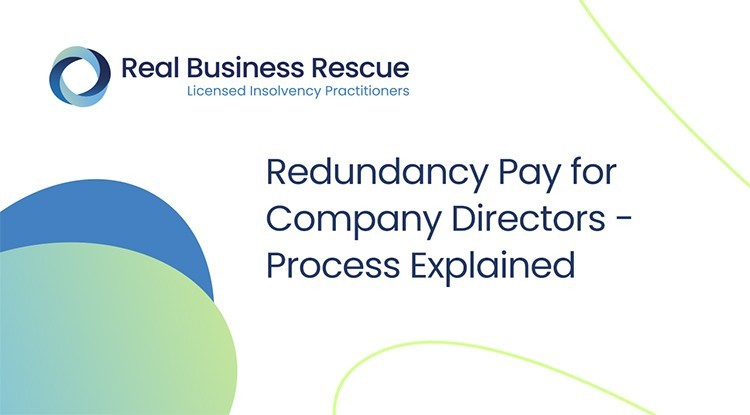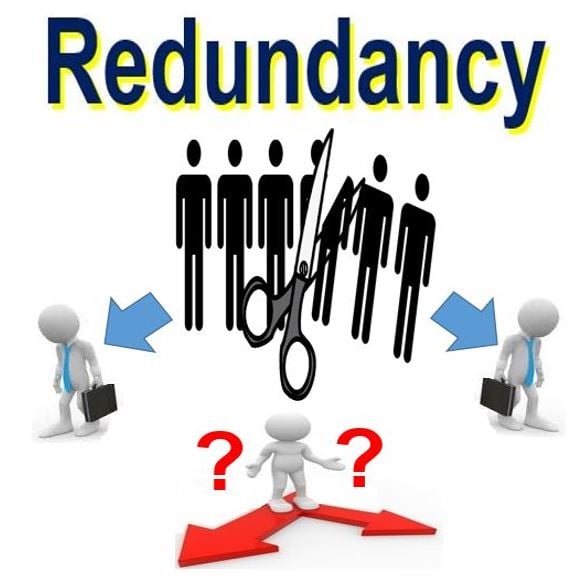Just How to Deal With Redundancy Pay If Company Goes Bust: Trick Details for UK Workers
Just How to Deal With Redundancy Pay If Company Goes Bust: Trick Details for UK Workers
Blog Article
Exploring the Operational Characteristics of Business Redundancy and Its Long-Term Sustainability

Redundancy Strategies for Service Continuity
In order to make certain continuous procedures, organizations should apply effective redundancy methods for business continuity. Redundancy in this context describes the replication of vital parts or functions within a system to mitigate the effect of possible failings. By including redundancy strategies, organizations can boost their strength against interruptions triggered by different variables such as natural catastrophes, tools failures, or cyber-attacks.
One common redundancy technique is the execution of backup systems and information storage space remedies. This entails producing matches of vital information and systems that can be turned on in instance of a key system failure. Furthermore, organizations can establish redundant interaction channels and power sources to maintain connectivity and operations during unexpected events.
Additionally, cross-training employees to perform multiple roles within the company can act as a useful redundancy method. This makes sure that crucial jobs can still be lugged out even if vital employees are inaccessible because of illness or other factors. Generally, efficient redundancy strategies are crucial for organizations to maintain operational connection and minimize the influence of possible interruptions.
Impact of Redundancy on Business Durability
Offered the vital duty redundancy strategies play in making sure company connection, exploring the effect of redundancy on business strength becomes necessary for recognizing the alternative functional dynamics of a business. Redundancy, when strategically implemented, can substantially add to boosting an organization's strength in the face of unexpected challenges.
Additionally, redundancy can strengthen staff member morale and confidence, understanding that there are backup strategies in position to address unanticipated scenarios. This complacency can bring about raised performance and an extra favorable workplace. In addition, redundancy can cultivate development and imagination within an organization as employees feel empowered to take computed threats, knowing that there is a safeguard to sustain them in instance of failing. On the whole, the influence of redundancy on business durability is profound, forming the lasting sustainability and success of a firm.
Balancing Performance and Versatility in Redundancy
Accomplishing an unified stability between functional effectiveness and flexible flexibility is a critical obstacle in the critical release of redundancy within organizations. Too much versatility without a solid functional structure can result in inefficiencies and disparity.
To balance efficiency and versatility in redundancy preparation, companies have to thoroughly analyze their functional demands, market characteristics, and strategic objectives. Applying lean methods visit can boost performance by getting rid of and enhancing processes waste, while cultivating a culture of flexibility and continual renovation can boost flexibility. Additionally, purchasing cross-training programs and durable interaction channels can help grow a functional labor force capable of taking care of varied jobs during periods of transition. Inevitably, his comment is here locating the appropriate stability between efficiency and versatility is vital for developing a durable and lasting company when faced with uncertainty.
Long-Term Sustainability Through Redundancy Preparation
To guarantee long-lasting stability and stability, companies should purposefully align their redundancy preparation with long-lasting sustainability goals, therefore balancing functional effectiveness with flexible adaptability. Long-lasting sustainability through redundancy planning entails more than just temporary cost-cutting procedures. It calls for a detailed strategic approach that prepares for future challenges and chances. Firms should see redundancy not as a reactive remedy to prompt problems however as a proactive strategy for long-lasting success. By incorporating redundancy planning with sustainability purposes, organizations can produce a resistant framework that can endure various market fluctuations and interior modifications.

Aggressive Steps for Lasting Firm Procedures
Just how can firms proactively boost their functional sustainability for lasting success? Implementing proactive steps is crucial for firms intending to make sure sustainable operations.
Additionally, fostering a society of continual renovation and understanding within the company can improve versatility to changing market problems and customer needs. Urging staff member participation in decision-making procedures and offering chances for expert development can enhance morale, productivity, and total efficiency. Establishing clear objectives, monitoring vital performance indicators, and consistently reviewing development are important parts of aggressive sustainability monitoring.
Working together with providers, customers, and various other stakeholders to promote lasting methods throughout the supply chain can create a surge effect of favorable effect - redundancy pay if company goes bust. By taking positive steps in the direction of operational sustainability, firms can construct strength, drive development, and safeguard their long-lasting success in an ever-evolving organization landscape
Conclusion

In the realm of business administration, the tactical deployment of company redundancy stands as a crucial yet complex practice that demands a delicate balance between functional effectiveness and long-term feasibility. By dissecting the functional characteristics that underpin firm redundancy and assessing its more comprehensive ramifications for business durability and flexibility, a nuanced understanding of exactly how redundancy approaches can shape the future trajectory of a business begins to unravel.Provided the vital role redundancy techniques play in guaranteeing organization connection, discovering the impact of redundancy on organizational resilience ends up being essential for recognizing the holistic operational characteristics of a company. Overall, the influence of redundancy on business resilience is profound, forming the lasting sustainability and success of a firm.
In final thought, recognizing the operational dynamics of company redundancy is critical for guaranteeing lasting sustainability.
Report this page